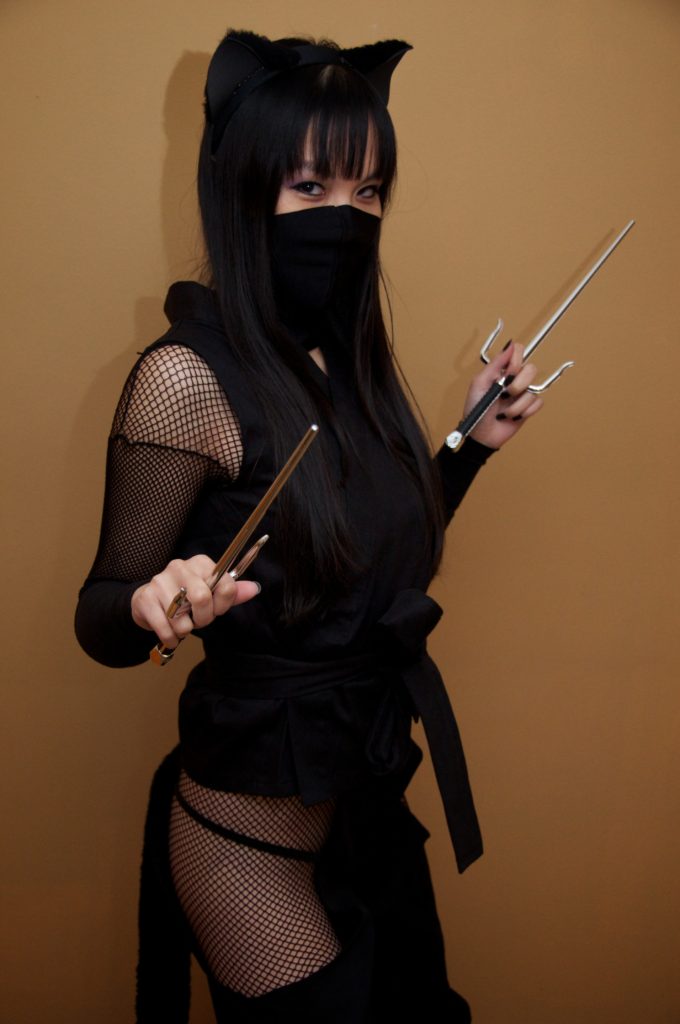Handy Household Hints: Urban Ninjutsu
In any instance of street survival self-defence, it is highly likely that you will be confronted with an assailant who is bigger, stronger and faster than you, and who has some sort of advantage, be it the element of surprise, possession of a superior weapon, heightened pain tolerance through drugs or insanity, accomplices for backup support, or at least some experience at actually killing, maiming and/or terrifying others. Despite all the odds, you still have to win. You either go home healthy and happy or you do not. There is no such thing as ‘second place’ in a street fight ot urban attack.
Moving and thinking like the wind is sometimes the only way to handle a violent attacker. By not being where the assailant expects you to be, and by not moving in the manner that the assailiant has learned to anticipate, you can increase the likelihood of not being at the end of his punches, kicks and cuts. The Nija’s ‘fu no kata’ (fighting like the wind) mode of response teaches simultaneous evasion, realignment and redirection to set up for a counterattack against targets the attacker might not be aware of as being vulnerable.

The Ninja’s ‘Nin Gu’ (Ninja tools) are far more than an ingenious array of antiques. The principle that the most practical weapons are those which fall easily to hand remains true today. The ‘kyoketsu shoge’ ringed-cord-and-dagger resembles mountain-climbing gear. garage inspection lamp cables or even the common telephone receiver on it’s cord. The ‘shuriken’ can easily be replaced with coins from the pocket, coffee cup saucers, or shards of hastily broken window glass. The ‘hanbo’ half staff is a walking stick, fireplace poker or baseball bat.
Most attackers see weapons as a special class of object, and can place too much reliance upon having a specific weapon brought to bear. Tools for self-protection are always available to the alert. There is no need to have a ‘tanto’ at hand when there are kitchen knives, metal rulers, scissors and screwdrivers around. The ‘kusari-fundo’ weighted chain can be replaced by belts with buckles, cameras on straps, neck ties or shoulder bags.
Camouflage (‘In-ton’) is one of the most effective means of self-protection. It is difficult for the attacker to defeat an enemy that he can not perceive. In times of war or revolution the considerations are even more urgent. Un-necessary risks and the expenditure of scarce supplies can be avoided by avoiding the conventional battlefield altogether.
Someone lurking about in a black ‘secret agent’ costume, let alone a 15th century Ninja costume, is certain to be assumed as being up to no good if encountered by police or security personnel. In urban or built-up areas, tones of grey, tan or blue are best suited for image-concealing clothing. The ninja wearing a dark grey tracksuit or blue denim jeans/jacket can easily fade into the shadows, and will stand a better chance of moving unchallenged. Running shoes, a rolled up watch-cap, a light sheen of perspiration, or even a towel or scarf around the neck or preferably the lower face will seem to be a natural part of the attire, and should not create any additional suspicion at all.
The Ninja’s legendary skill at moving undetected by employing a knowledge of stealth and silent movement techniques can be cultivated by personal familiarisation and bodily internalisation. Take time to watch yourself as you and those around you move through daily life. Be aware of all the normally unnoticed, unconsciously awkward actions, like doors being opened and closed with too much force, heels banging and sliding on floors and stairs, books and tools being flung or dropped. Once you have observed the crude ungainliness that passes for normal habit you will simply be able to eliminate all unnecessary aspects of body motor actions. You will have come to know ‘ninjutsu’, the art of invisibility.